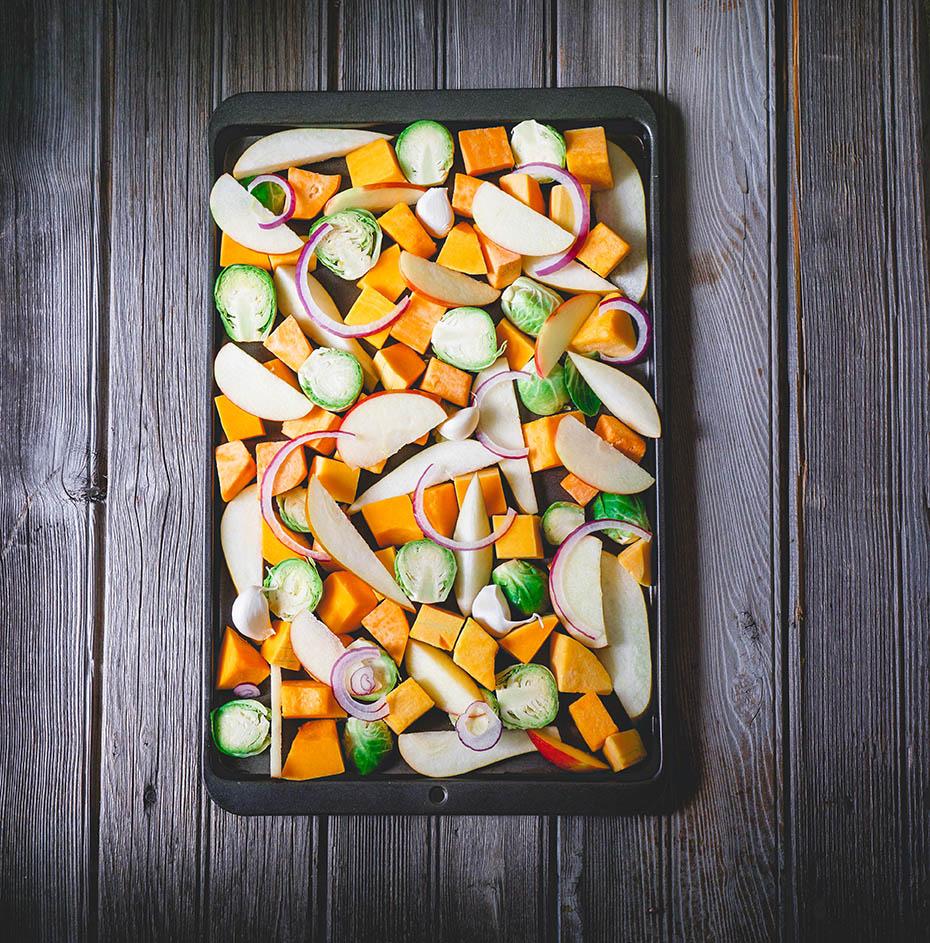Fall into Flavor
September 3, 2024 Nutrient rich fall foods and Bariatric friendly autumn inspired recipes
Nutrient rich fall foods and Bariatric friendly autumn inspired recipes
Written By: Carley Salas MS, RDN, CDN
Embrace the changing of seasons by welcoming healthy produce into your kitchen and trying some new festive fall recipes! When you eat produce that is grown locally and in season, it is more nutrient dense and tastes better than when it is eaten out of season.
What vegetables and fruits are in season right now in New York? Apples, kale, onions, peppers, tomatoes, radishes, lettuces, broccoli, carrots, spinach, beets, spaghetti squash, cabbage, corn, eggplant, pumpkins, garlic, stone fruits (plums, nectarines), bok choy, zucchini and yellow squash, potatoes, and more!
Pumpkins
Pumpkins are viewed as a symbol of harvest and the changing of seasons from summer to autumn. The pumpkin has morphed from a fall decoration to a festive fall flavor used in many different types of foods and beverages, with food manufacturers answering consumer demand for countless pumpkin desserts, coffees, snacks, and more. Yes, pumpkin spice is everywhere! Not only is this tasty fall fruit (botanically speaking pumpkins are technically a fruit!) one of the most versatile in cooking, but it also offers an impressive nutrient profile.
Pumpkin comes from the same family as squash, cucumbers, watermelons, and gourds. In addition to the flesh, which often is cooked and used for pies or soups, the seeds of many pumpkin varieties are enjoyed roasted or sautéed. Pumpkin seeds offer their own unique nutritional benefits. In addition to being high in protein (7 grams per 1-oz serving), they also contain heart healthy fats, fiber, magnesium, zinc, iron, and vitamin K. Pumpkin seeds that have had their shells removed are called “Pepitas” and make a lovely crunchy salad topper.
Pumpkins are 90% water and low in calories. One cup of canned pumpkin contains 83 calories, 3 grams of fiber, and less than 1 gram of fat. In comparison, the same serving size of sweet potato has triple the calories. Make sure you are buying plain canned pumpkin and not pumpkin pie filing, which has sugar added. When it comes to nutrients, pumpkin contains more fiber than kale and is full of iron and heart-healthy magnesium. The fiber helps you feel full and promotes digestive health for weight control and prevention of constipation.
Pumpkins are extremely rich in vitamin A, which is a key nutrient for healthy vision, proper cell growth, and a strong immune system. One cup of cooked pumpkin provides 245% of the recommended dietary allowance (RDA) of vitamin A! Pumpkin also contains vitamin C, B-complex vitamins such as folate, niacin, vitamin B6, and thiamin, as well as the minerals copper, calcium, potassium, and phosphorus.
There's so much more to pumpkin than just pie! It's very versatile and can take on many different flavor profiles. Whether pumpkin is steamed, boiled, roasted, or canned, try using it in dishes such as curries, stews, and soups that would normally include sweet potato. Try doing a 50/50 blend of mashed pumpkin and mashed sweet potato! You can also add pumpkin puree to overnight oats or baked oats.
Apples
Apples are the most commonly consumed fruit in the United States when including all forms (fresh, canned, frozen, dried, and juice). Did you know there are over 2,500 varieties of apples grown in the US? Because of their popularity and high nutritional content, apples have been a focus of much scientific research on the prevention of chronic diseases. Their consumption has been linked to positive outcomes for a variety of diseases including cancer, diabetes, osteoporosis, cardiovascular disease, and cognitive and pulmonary disorders2. As it turns out, eating an apple a day really might keep the doctor away!
High intakes of fruits and vegetables have been shown to reduce risk of chronic disease; however, most Americans aren’t achieving the recommended intake of either. In fact, less than 50% of Americans meet the guidelines for fruit consumption as recommended by the Dietary Guidelines for Americans. Apples are about 85% water and contain vitamin C, potassium, and 4 grams of fiber per medium apple. A diet high in soluble fiber can help control diabetes and manage weight because it slows gastric emptying, thus slowing the rise in blood sugar and promoting fullness.
Creative ways to incorporate apples into your diet:
- Have an apple as a snack, on its own or paired with peanut butter or cheese
- Dice apples and add to oatmeal or on top of protein pancakes or waffles
- Add diced apples or applesauce into whole grain muffins or quick bread mixes as a sugar substitute
- Add fresh or frozen apples to smoothies
- Add fresh apple slices or dried apples to salads for a sweet crunch
- Bake apples with fall vegetables such as sweet potatoes or butternut squash as a side dish
- Sprinkle baked apples with cinnamon and nutmeg for a light dessert on it’s own or on top of Greek yogurt for protein
- Make or buy unsweetened applesauce as a snack
- Grate and incorporate apples into coleslaw
Best apples for making applesauce: Pink Lady, Granny Smith, Braeburn
Best apples for baking: Granny Smith, Pink Lady, Golden Delicious, Fuji
Best apples for salads: Honeycrisp, Pink Lady, Fuji, Jazz, Empire
Brussels Sprouts
Brussels sprouts tend to evoke a strong response—people either love them or hate them, likely due to their pungent sulfur aroma when cooked. A member of the Brassicasaeae family (think cabbage, cauliflower, broccoli, etc.), this cruciferous vegetable looks like a mini cabbage and is, in fact, a cabbage variety with budding stems. Brussels sprouts have a robust nutrient profile and a wide variety of culinary uses. Low in calories, 1 Cup of Brussels sprouts contains about 75 calories and provides 2.6 grams of fiber. They are especially high in vitamin K and vitamin C as well as potassium, folate, iron, B6, magnesium, and phosphorus.
To minimize the bitterness of Brussels sprouts, cut the sprouts in half and cook them in a large pot of boiling water. The flavor compounds are most concentrated in the center and cutting sprouts in half enables the compounds to leach out into the water. However, some of the nutrients are also leeched out into the cooking water, making this method not ideal.
Roasting Brussels sprouts results in a sweeter, nuttier flavor thanks to the browning and caramelization that occurs during this cooking method. The contrast in texture that results from roasting at a high temperature is particularly enticing as it creates some nice crunchy bites. Toss halved Brussels sprouts with olive oil, salt, and pepper, and spread onto a large sheet tray, giving the sprouts plenty of room. If you overcrowd the pan, the Brussels sprouts will steam rather than roast and you’ll miss out on the browned, crispy exterior that makes roasted vegetables so appealing.
Brussels sprouts can also be shredded and eaten raw as the base for a salad or slaw, or halved and sautéed in olive oil. Roasted Brussels sprouts pair well with other hearty vegetables, such as sweet potatoes, butternut squash, and red onions. Top Brussels with poached eggs during the last few minutes of cooking for a boost of protein or serve roasted vegetables in a bowl with shredded chicken, and a maple vinaigrette dressing. Shaved Brussels sprouts can serve as the base for a main dish salad with edamame, dried cranberries, chopped nuts, and balsamic vinaigrette.
Roasted Brussels Sprouts With Apple and Walnuts
Serves 4 as a side dish
Ingredients
- 1 lb Brussels sprouts, stems trimmed, halved lengthwise
- 1 large red apple (such as Fuji, Pink Lady, or Gala), cut into a 3/4-inch dice
- 1 large shallot, sliced into thin rings
- 2 T extra-virgin olive oil
- 1/4 tsp sea salt
- 1/4 tsp pepper
- ¼ Cup chopped walnuts, toasted
Directions
- Adjust oven rack to lower-middle position, place large, rimmed baking sheet on rack, and heat oven to 425˚F.
- Toss Brussels sprouts, apple, shallot, oil, salt, and pepper together in large bowl until thoroughly combined. Carefully remove hot baking sheet from oven and pour contents of bowl onto sheet in even layer, working quickly and taking care to flip Brussels sprouts cut side down.
- Roast until sprouts are well browned, about 25 minutes. Transfer to platter and sprinkle with walnuts. Drizzle with additional olive oil and salt if desired.
Oven Baked Pumpkin Protein Pancakes
Serves 4
Ingredients
- 2 ripe bananas
- 1 cup pumpkin puree
- 1 T pumpkin pie spice (or 1/4 tsp cloves, 1 tsp nutmeg, 1 tsp cinnamon)
- 1 T vanilla extract
- 4 eggs
- 2 cups egg whites
Directions
- Preheat oven to 375° F.
- Mix together bananas, pumpkin, pumpkin pie spice, and vanilla extract.
- Whisk together with eggs and egg whites.
- Spray two 8 X 8-inch pans (or one 9 X 13-inch pan should suffice) with cooking oil.
- Using a measuring cup or scoop, divide mixture evenly among pans. If you're using two pans, it's important to go back and forth between each one. (The pumpkin/banana may hang out at the bottom so you don't want all eggs in one pan and pumpkin in the other. To avoid dividing mixture, use one large pan.)
- Bake at 375° F until pancakes are fully set, about 25-30 minutes. To crisp up the top like a traditional pancake, broil on low for 2-4 minutes keeping a close eye on it.
- Let stand 10 minutes before serving.
References:
1. ‘Tis the Season for Pumpkin, Today’s Dietitian
2. Health Benefits of Apples, Today’s Dietitian
3. Brussels Sprouts, Today’s Dietitian
